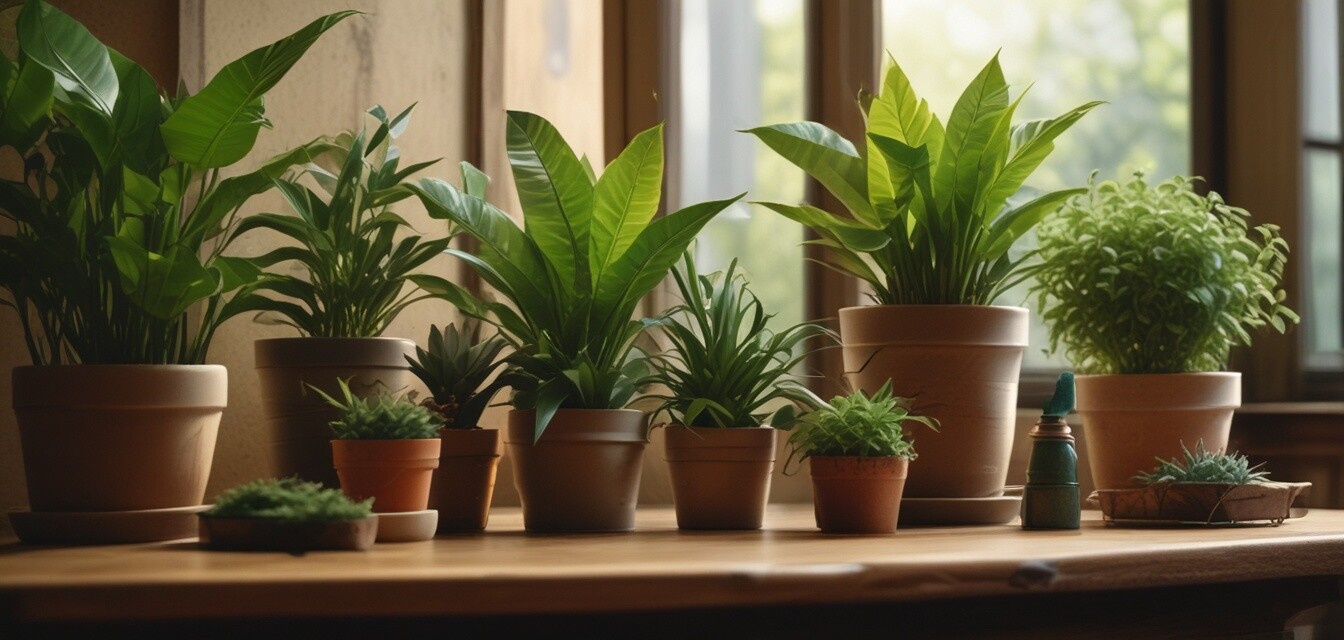
Understanding Your Plant's Nutritional Needs
Key Takeaways
- Different houseplants have unique nutritional needs based on their species.
- Nutritional deficiencies can lead to poor growth and health in plants.
- Understanding soil, water, and light requirements is essential for proper nutrition.
- Regular fertilization is crucial for plant vitality.
- Utilize organic options for a healthier approach to plant care.
For any houseplant owner, understanding your plant's nutritional needs is a crucial step towards ensuring optimal health and growth. Each plant species has its own set of requirements that, if met properly, can allow your greenery to thrive beautifully. This article will delve into the essential aspects of plant nutrition and provide you with the knowledge to help your houseplants flourish.
The Importance of Nutritional Needs
Nutritional needs are paramount for plant growth and health. Without the proper nutrients, houseplants may exhibit issues such as yellowing leaves, stunted growth, or even death. Here's how you can recognize and respond to these needs:
Essential Nutrients for Houseplants
| Nutrient | Function | Deficiency Symptoms |
|---|---|---|
| Nitrogen | Promotes leaf growth and overall vitality. | Yellowing leaves, stunted growth. |
| Phosphorus | Supports root and flower development. | Poor flowering and weak roots. |
| Potassium | Enhances overall growth and resistance to disease. | Leaf curling, browning leaf tips. |
| Calcium | Strengthens cell walls and promotes new growth. | Brown spots on leaves, blossom-end rot. |
| Magnesium | Essential for chlorophyll production and photosynthesis. | Interveinal chlorosis, leaf drop. |
Signs of Nutritional Deficiencies
Regularly inspect your plants for signs of nutritional deficiencies. Here’s a list of symptoms to keep an eye out for:
- Leaves turning yellow or brown.
- Stunted growth or elongated stems.
- Pale or washed-out leaf color.
- Leaves dropping prematurely.
- Poor flowering or fruiting.
Meeting Your Plant's Nutritional Needs
Once you understand what nutrients your plants need, it’s essential to provide them appropriately. Here are some simple ways to ensure your houseplants are getting the right nutrition:
Understanding Soil Nutrients
The growing medium you choose plays a significant role in your plant's nutritional uptake. Here’s what to consider:
- Soil Quality: Choose high-quality potting mix enriched with essential nutrients.
- pH Levels: Maintain a pH level suitable for your specific plant type, typically between 6.0 to 7.5.
- Drainage: Ensure the soil has good drainage to prevent nutrient loss and root rot.
Regular Fertilization
Regular fertilization can significantly improve plant nutrition. Here are tips for effective fertilization:
- Use balanced fertilizers that contain a mix of nitrogen, phosphorus, and potassium.
- Apply fertilizers during the growing season (spring and summer).
- Follow the recommended application rates to prevent over-fertilization.
Watering Practices
Watering is another critical aspect that affects nutrient availability in plants:
- Water thoroughly, allowing excess to drain out.
- Consider the water's temperature; lukewarm water is best for indoor plants.
- Always check the soil moisture before watering to avoid overwatering.
Organic vs Chemical Fertilizers
When it comes to fertilization, choosing between organic and chemical options is essential. Here’s a simple comparison:
| Type | Advantages | Disadvantages |
|---|---|---|
| Organic Fertilizers | Environmentally friendly, slow-release nutrients, improves soil health. | Requires more frequent application, may be less concentrated. |
| Chemical Fertilizers | Quick nutrient availability, highly concentrated, easy to apply. | Can harm beneficial soil organisms, risk of nutrient depletion. |
Monitoring and Adjusting Nutritional Needs
Understanding that your plants’ nutritional needs can change with time will help you maintain a more vigorous garden. Here are some tips for monitoring and adjusting:
- Keep a plant journal to track growth patterns and nutrient adjustments.
- Reassess your plants’ conditions seasonally to adjust watering and fertilizing schedules.
- Consult resources or communities for advice on specific plants’ needs.
Conclusion
Understanding your plant's nutritional needs can significantly impact their growth and overall health. Regular assessment and adjustments to their nutrients, watering, and soil conditions can lead to cohabiting with flourishing indoor gardens. By implementing the tips and information provided, you'll be well on your way to nurturing vibrant houseplants that brighten your space.
For more plant care tips and insights, visit our Care Tips section or explore our Air-Purifying Plants category for making healthier choices in your indoor environment.

